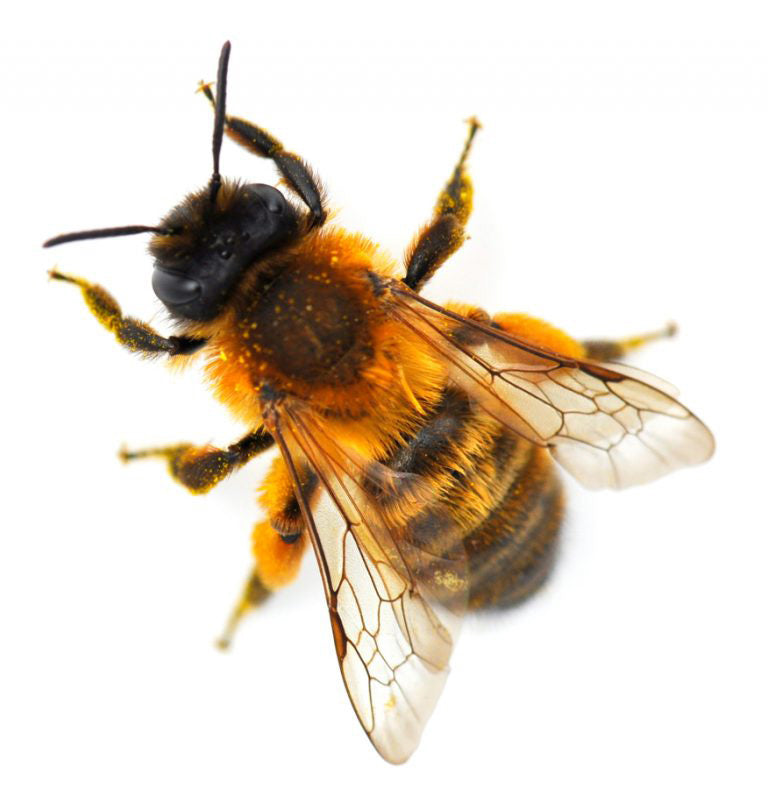If you were plagued by carpenter bees during the spring and summer, fall is the perfect time to fill their holes for a carpenter bee free spring.

Carpenter Bee Holes.
During the fall and winter nests, are not active. The female carpenter bees have finished their nesting duties and passed away in their tunnel.
Filling the holes accomplishes two tasks:
- It stops any larva laid in the nest from emerging in the spring.
- It stops carpenter bee young who are scouting for a new home at springtime from choosing your holes.
There are a variety of ways to successfully fill a hole, our favorite is the wooden dowel and caulk method. To do this, you plug the hole and make it flush with the existing exterior. This solution will prevent young carpenter bees from emerging from the nest in the spring.

To do this, you need the following:
- Cotton ball soaked in rubbing alcohol.
- ½” diameter wooden dowel
- Wood caulk
- Wooden Corks (optional)
- Exterior paint matching your existing exterior (optional)
Instructions:
- Stuff the cotton ball soaked in rubbing alcohol as far down the nest as possible.
- This will remove the air in the nest and suffocate the larva.
- Some people like to treat the holes with pesticide to make sure the larva are killed. This is completely up to your preference, as we have found using the rubbing alcohol to be effective.
- Cut your wooden dowel into ¾” pieces and push as many as possible into the nest. Cut the last dowel piece to be flush with the exterior.
- If you rather skip the wooden dowels, you can use our wooden corks designed to fit carpenter bee nests.
- If you use the wooden cork, move to step 3 (caulk) and push the wooden cork in place after.
- Squeeze caulk into the hole and wipe flush with the exterior.
- Wait for the caulk to dry and paint the now patched hole to match your home.
Be sure to find all your carpenter bee nests. You’ll need to look for ½” holes around the eaves and corners of your home. Deck and porch railings are also ideal places for the bees to nest. The holes could have brown stains around them, or wood shavings dropped from the holes.
PRO TIP: Once your nests are plugged up and secure, remember those locations for the spring. They are clearly great spots for carpenter bee nests, so you’ll want to prevent new nests. Placing the traps up at the beginning of spring will stop carpenter bees from nesting in your home!










11 comments
michael A Castro
I have a tough Carpenter bee problem. The house we bought has redwood beams that extend from outside the house to inside. The outside parts of the beams have suffered from carpenter bee infestations, so much that there are numerous holes in each beam and the tunnels extend into the beams up to a foot or more to the left or right of a hole. I have been trying numerous methods to fill the holes while strengthening the beams as they hold up the roof and would be impossible to replace. I have stuffed the holes with steel wool and plugged the hole with wood putty, but I’m concerned that will not strengthen the beams enough. I have tried injecting liquid wood but it just pours out. I have tried to fill them with wood putty, but it’s not pliable enough and too messy (get’s all over the place and not enough in the hole) and I can’t tell if the putty has fully filled the cavity. Is there a product that can be injected into the cavity and expands? filling the cavity completely and strengthening the wood as well while keeping the bees out for good? Very frustrated and it seems none of the youtube videos or on-line advice addresses this specific problem.
Customer Support
@Cathy – That’s a tough one! While carpenter bees are not the most efficient pollinators, they are still pollinators so they are probably just doing their job around your sedum. We don’t have expertise on how to steer the bees in a different direction to let other pollinators be closer to a plant. just how to get rid of them. I would reach out to a gardening expert and get their opinion. Otherwise, I think you have to trust honey bees are pollinating your other plants. ~Customer Support
Cathy
My fall sedums are loaded with carpenter bees. The honey and bumblebbees don’t come near them. How can I stop the carpenter bees from hoarding my plants.
Customer Support
@Bev Jordan – So glad to hear they are working as planned! As for larger holes, you could do caulk. But sometimes the best way is to replace the wood, if possible.
Bev Jordan
Carpenter bee traps are great; one trap caught about 8-10, another about 6-7 & the other about 5-6. I will be buying more in the spring. In places I overlooked I have some really large holes that need filling, & corks, etc. will not work. I need something that will fill large cavities.What do you suggest ?
Leave a comment
All comments are moderated before being published.
This site is protected by hCaptcha and the hCaptcha Privacy Policy and Terms of Service apply.